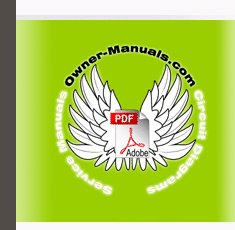|
|
|
Categories
|
|
Information
|
|
Featured Product
|
|
|
 |
|
|
There are currently no product reviews.
 ;
Very good service-manual with clear electrical diagrams. Thanks you.
 ;
the manual is in quite good quality and it's in pdf. manual was send in less then 6h.
 ;
Absolutely top, I've got now all Service-Manuals I'll need to repair my Mackie-Mixer!
 ;
The service manuel is very helpful, we where able to restore the device to its working operation again.
 ;
Great quality complete service manual!!! complete parts list and drawings
Power Amplifier
Reference 610a/611a
INSTALLATION AND SETUP (CONT.)
SETTING DBO� The Dynamic Bass Optimizer (DBO) is used to enhance low-frequency reproduction in a vehicle. Conventional bass-boost circuits only increase bass at a fixed frequency, and cause the amplifier to consume considerable power. The DBO allows you to adjust the frequency (20Hz � 80Hz) as well as the boost level (up to 12dB; see Figure 14), allowing you to fine-tune the bass in your system to optimize performance. For sealed enclosures, the DBO can be used to enhance the lower bass region of sealed enclosures. For bigger/fuller bass, adjust the HP FREQ between 35Hz and 45Hz; adjust the BOOST control according to your preference. For tighter-sounding bass, adjust the HP FREQ between 45Hz and 55Hz; adjust the BOOST control according to your preference. For vented enclosures, the DBO should be used as a subsonic filter to reduce overexcursion of the woofers. Set the HP FREQ control 10Hz below the tuning frequency of the enclosure (e.g., 25Hz for a box tuning of 35Hz); adjust the BOOST control to taste. This will conserve amplifier power typically wasted on frequencies below the tuned frequency of the enclosure. For infinite-baffle applications, set the HP FREQ to the speaker�s Fs value (reducing overexcursion of the woofer); adjust the Boost control to taste. Figure 14. Frequency-response curves show typical DBO control ranges.
DBO HP FREQ Control
(adjusts cut-off frequency)
dB 0 -3 -6 -9 -12 20 80 Freq. (Hz)
20Hz 100Hz
STATUS LEDs Clip: Indicates the amplifier is being overdriven, and your speakers may be in danger. This should blink only on musical peaks, and not be on constantly. Power: Indicates the amplifier is on. Protection: Refer to �Troubleshooting� for specific indications. Figure 15. LED status.
HP FREQ
DBO BOOST Control
(adjusts boost amount at cut-off frequency)
dB 12 6 0 -6 -12 20 80
BOOST
MIN
MAX
Freq. (Hz)
6
|
|
 |
> |
|
